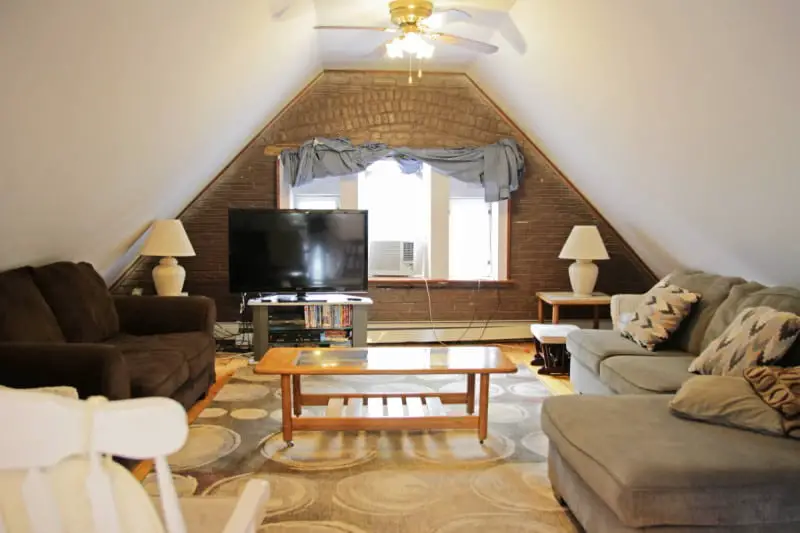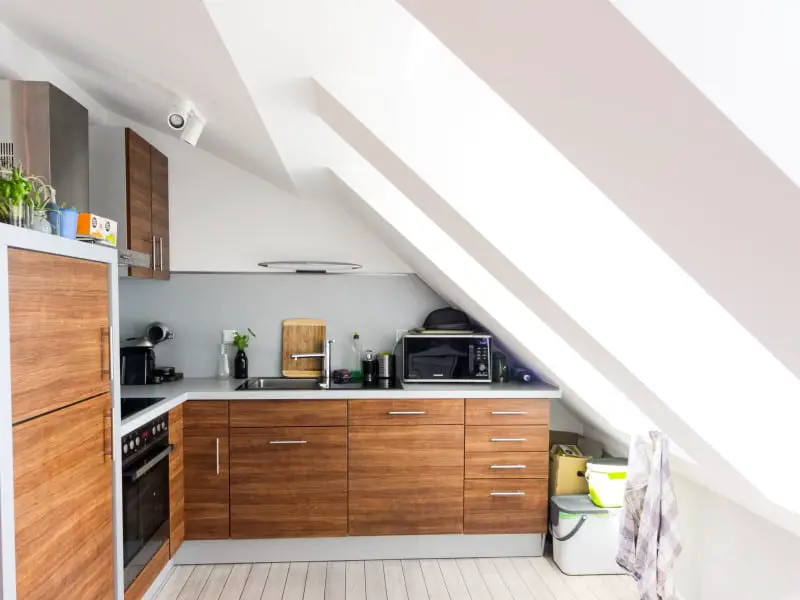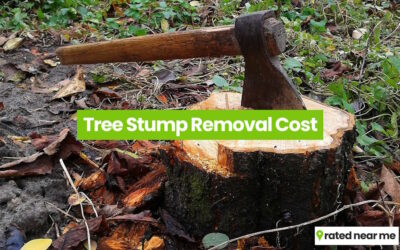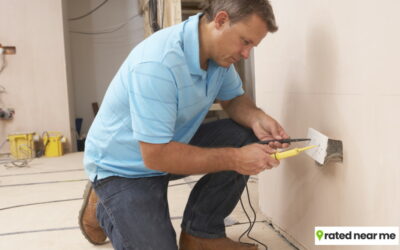No one wants the hassle of moving house. Not only is it expensive, time-consuming, and stressful, but you also need to find a new favourite local takeaway, put your kids into a new school, find new walks for the dog and switch all your bills.
But sometimes, your existing home just isn’t big enough.
As life moves on, so you will need more space. However, this doesn’t mean that you have to up and leave and buy somewhere new. More and more people choose to extend their existing homes rather than sell up and move out.
If you are looking for ideas and inspiration, you can read our guide on Loft Conversions Before & After.
Why is a loft conversion a good investment?
Converting your loft is one of the most popular ways to add value and space to your home.
Loft conversations transform existing unused, wasted attic space into a beautiful, valuable room. For the amount of space you can access, loft conversions are one of the cheapest ways to increase the square footage of your home without the need to move.
Another reason loft conversions are becoming increasingly popular, is that it adds floor space without eating into your garden or parking area. Extensions at ground level can be beneficial, but they come with the sacrifice of shrinking your outdoor space. Not to mention they can be super expensive.
You will need to lay a foundation, get planning permission, and it can take a long time to arrange and build!
In contrast, loft extensions are reasonably straightforward. For some types of conversions, you won’t even need planning permission. The basic structure is already there, and it won’t take nearly as long or cost as much as a full extension.
Are loft conversions worth it?
Before we break down how much you can be expected to spend on converting your loft, you need to establish it’s worth it.
Loft conversions can add a significant amount of value to your property. Depending on what you convert your loft into, you could add a considerable amount of value to your home.
Studies suggest that adding a bedroom and bathroom to the top of your house could add as much as 20% to your current house price. Adding a bedroom and bathroom or ensuite is one of the most popular types of loft conversions.
Based on an average house price of around £230,000 as of January 2020, this means converting your loft could increase the value of your house by just under £50,000.
In London and other major cities, this increases to a 25% increase in house value. Houses in major cities also tend to cost more, meaning you could add up to £100,000 in value just by converting your loft.
As well as the financial benefits of attic and loft conversions, there is the economic benefit of not having to move. Moving costs money. In addition to taxes, you also need to think about storage, hiring a van, buying new furniture, and the cost of decorating your new home.
By remaining in your current home and converting the attic or loft space, you will be saving the money you would have spent moving house. And that’s not to mention the emotional and mental stress of moving.
Overall, unless you need a massive increase in floor space or want to move to a new area for other reasons, converting your attic space into a functional room is one of the best things you can do.
Not only will you be adding space, you’ll also significantly increase the value of your home, and you won’t have to move. Loft conversions are a win-win situation for everyone.
You can get loft conversion quotes here for free.
How much does an attic or loft conversion cost?
So, if you think you would like an attic conversion to add value to your home, how much should you expect to spend?
Different types of modifications can vary significantly when it comes to costs. We’ve broken down how much you will need to budget for:
Velux Loft Conversion
Velux loft conversions involve inserting roof windows/openings into the existing roof structure without adding additional space. If your attic has plenty of headroom and decent floor space, this is a great option.
Velux attic conversions are the most affordable type of loft conversion. You can expect to pay anything from £10,000 or more. This cost usually involves the cost of the work, new windows, materials, and additional costs such as stairs to access your new attic. You will have the added cost of room renovations on top.
Dormer Loft Conversion
Dormer loft conversions are still a reasonably affordable option. When carefully planned, they can add a considerable amount of headspace and useable floor space to an attic.
Generally, unless your house is listed, you won’t need planning permission. If you are unsure, your building contractors will be able to provide more information.
A starting budget for this type of conversion is around £20,000. A larger-scale project could cost upwards of £40,000.
Hip to Gable Loft Conversion
This type of loft conversion is perfect for hipped roofs with sloping sides and creates additional headroom and functioning floor space on the sloped side. An additional wall is added therefore increasing the cost of the project.

Realistically, you should allow a minimum budget of around £30,000 and expect the project to take approximately eight weeks from start to finish. You can opt to have a double hip to gable conversion depending on your existing roof style.
The price won’t necessarily be double, so it’s worth chatting to your build team if you really want to maximise space. With this major type of conversion, you will probably need planning permission.
Mansard Loft Conversion
A mansard conversion is the most expensive type of attic conversion. This involves restructuring parts of the roof and will need structural planning as well as aesthetics. It does give a vast amount of extra space and can transform the top of a house into a beautiful room.
However, it doesn’t come cheap. A basic mansard conversion will cost upwards of £45,000. Some modifications can cost more than £60,000. If everything goes smoothly, you can expect work to be completed in around 10 weeks.
Custom Loft Conversion
If your house is in an unusual shape, has a distinctive roof, or you want to add a significantly-sized loft extension, you should speak to building experts about a custom project.

They will be able to advise you on the expected costs, and the time it will take to complete the building work.
Usually, a custom attic conversion will begin from around £30,000, depending on the size of the project. More expensive custom jobs can cost over £100,000.
Find The Cheapest Loft Conversion Specialist Near You
Save money by comparing free loft conversion quotes
What are you paying for?
When we talk about loft conversions, it is an all-encompassing term that includes a massive amount of additional work.
If you are working with a single building company, rather than individual trade contractors, make sure that you check what exactly you are paying for. If you are working with multiple contractors, make sure you have got all your bases covered and check what support they need to get their job done.
To help, here is an essential list of all the incidental jobs that will need completed to have a successful loft conversion:
- Project management
- Architect
- Potential surveys, e.g. bats/birds/damage to the roof
- Scaffolding hire
- Preparing the existing space
- Structural roof changes (if necessary)
- Roof support
- Covering/protecting the roof
- Electrics
- Plumbing/heating/boiler upgrades
- Health and safety for workers
- Exterior cladding
- Labour costs
- Material costs
- Insulation
- Flooring
- Staircase to access loft
- Plastering walls
- Painting & Decorating

How To Fund Your Conversion
Loft conversions don’t come cheap. Even the least expensive option of putting inroof light windows can cost around £10,000.
It really is an investment in your home and your happiness, but that doesn’t mean it is easy to access the kind of capital you might need to fund an attic conversion.
As well as the cost of the material and the work, you may also need additional money for unforeseen problems or getting the paperwork right and approved.
Having a small contingency budget is necessary when doing building work. You don’t want to knock a hole in your roof, only to encounter a problem and run out of money before being able to finish the job.
The most common way to fund smaller projects is to use savings or loans from banks. However, as building projects get larger and more complex, traditional funding options are less suitable.
A popular way to raise costs for a loft conversion is to remortgage the property. Banks are much more willing to lend more significant amounts over the long term with substantial collateral.
For this, you will also need to prove that you have a steady income to pay the mortgage payments over time.
You can also release equity in your property, allowing you to access capital tied in the building itself.
Finally, speak to specialist lenders about bespoke loans. Some specialist lenders will be able to offer loans which are more favourable for building projects.
Other Things To Consider Before A Loft Conversion
The prices listed above are approximate costs, these will vary greatly depending on your existing roof structure and your plans. If you want more exact costs, arrange a free no obligation loft conversion quote from local companies.
Before you set your heart on a specific type of conversion, it’s worth talking to experts who will advise if the style of work you want is feasible.
If adding value to your home is important, it is also worth discussing your plans with an estate agent who will be able to provide advice on the most financially beneficial option.
But, before you jump into your conversion plans, here are some things to think about
1. Your Neighbours
This isn’t just a courtesy call. You will need to check if there are any legal obligations such as a party wall agreement or if you are going to put scaffolding on their property.
2. Water Tank/Electricity
Converting your attic might mean you suddenly don’t have anywhere for your water tank or fuse box. Alternatively, your loft may not be wired for electricity or have any water or heating pipes. In this case, you’ll need to factor in additional costs if you plan on heating your new loft.
3. The State Of Your Roof
This is particularly important for older properties that may have water damage, rot, or broken or damaged sections of the roof. You may need structural advice on how to handle a delicate roof. This costs extra and may mean the work takes longer. If in doubt, speak to an architect.
4. Contingency Plans
Even the best-laid plans can go awry; you should have a contingency plan if things go wrong and you need somewhere to stay. A leaking hole in your roof in the middle of winter is not ideal.
5. Health & Safety
Depending on the type of work that you are having completed and the state of the existing building, you might need to check building regulations. Fire safety is always an issue. If in doubt, seek the advice of a professional.
6. Is It Actually Possible
Before you get carried away, take a step back and think about the practicalities of converting your loft? Do you have space for a staircase? Is your roof at a good pitch? Is your home listed?
Loft & Attic Conversion Conclusion
Having a loft conversion is usually a small amount of hassle for a considerable gain. As well as additional living space, you will actually add value to your home.
If it is appropriate for you and your home, a loft conversion is an excellent investment, but you should know what you are paying for before you get started.
Costs can vary greatly depending on what you are planning to do, so get in touch with several loft conversion specialists near you and ask for a few estimates before you commit.




